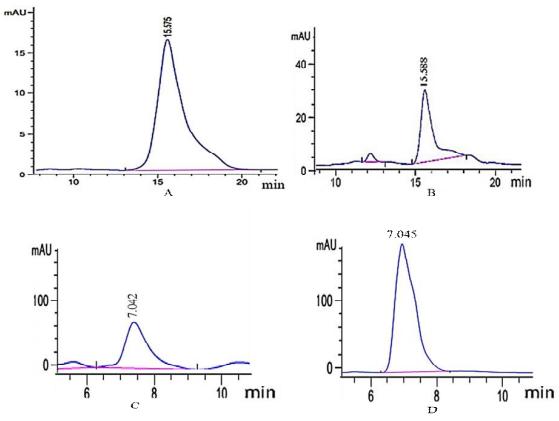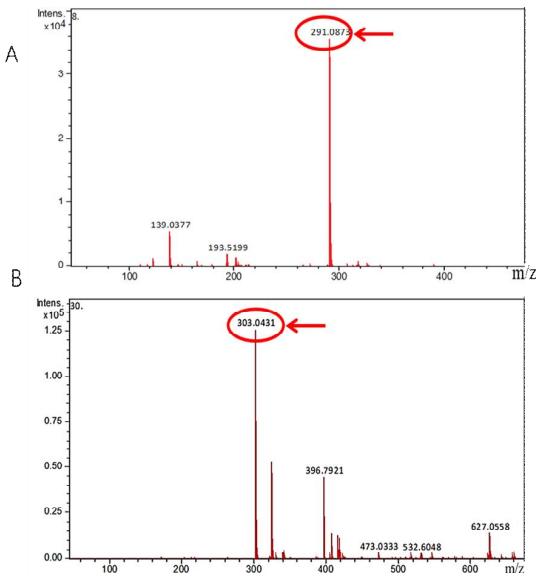What is Catechin?
Catechins are types of flavonoids, categorized under plant secondary metabolites. These are naturally occurring polyphenolic compounds, with potent antioxidant, anti-inflammatory, and antitumor properties. The catechins come in eight stereoisomers depending upon the configurations of two chiral centers present on the molecule. These include (+)-catechin (C), (-)-epicatechin (EC), (+)-gallocatechin (GC), (-)-epigallocatechin (EGC), (-)-catechin-3-gallate (Cg), (-)-gallocatechin-3-gallate (GCg), (-)-epicatechin-3-gallate (ECg), and (-)-epigallocatechin-3-gallate (EGCg).
Why Catechin Analysis?
The powerful antioxidant properties of catechin can significantly reduce oxidative stress by scavenging free radicals, making them highly effective in the prevention and treatment of various chronic diseases, including cancer, diabetes, cardiovascular diseases, and neurodegenerative diseases. Their anti-inflammatory properties offer immense potential in treating inflammation-related conditions. Recognizing their therapeutic potential, an analysis provides crucial insights for their incorporation into functional foods, nutraceuticals, and pharmaceuticals.
Moreover, an accurate catechin analysis forms the basis of quality control for several food and beverage industries, especially those dealing with green tea, dark chocolate, and grape wine. It enables the determination of the grade and quality of the product based on the quantity and proportion of various catechins present.
At Creative Proteomics, we leverage state-of-the-art technologies and world-class expertise to provide accurate, sensitive, and reliable catechin analysis in various sample matrices. This ensures the precise identification and quantification of various Catechins, contributing to improved therapeutic outcomes, product development, and quality control.
Catechin Analysis at Creative Proteomics
Creative Proteomics offers comprehensive catechin analysis services for research, industrial and clinical purposes. We employ a highly trained team of professionals adept in the field of analytic chemistry and bioanalysis, capable of meeting diverse customer requirements whether it is the industry or academia.
- Qualitative and Quantitative Analysis of Catechins: Determining the presence and concentration of different catechins in samples.
- Structural Elucidation of Catechins: Unraveling the structure of unknown catechins using mass spectrometry.
- Metabolite Profiling and Biomarker Discovery: Identifying and quantifying the entire spectrum of catechins and their metabolites in biological samples and elucidating potential biomarkers.
Catechin Metabolism Analysis Techniques
Liquid Chromatography-Mass Spectrometry (LC-MS)
- Agilent 1290 Infinity II LC System coupled with Agilent 6470 Triple Quadrupole Mass Spectrometer
- Thermo Fisher Scientific Q Exactive Hybrid Quadrupole-Orbitrap Mass Spectrometer
Gas Chromatography-Mass Spectrometry (GC-MS)
- Shimadzu GCMS-TQ8050 Triple Quadrupole GC-MS/MS System
- Agilent 7890B Gas Chromatograph coupled with Agilent 5977B Mass Selective Detector
Liquid Chromatography-Tandem Mass Spectrometry (LC-MS/MS)
- Waters Acquity UPLC System coupled with Waters Xevo TQ-XS Mass Spectrometer
- AB SCIEX Triple Quad 5500 LC-MS/MS System
Capillary Electrophoresis-Mass Spectrometry (CE-MS)
- SCIEX PA 800 Plus Pharmaceutical Analysis System coupled with SCIEX Triple TOF 5600+ Mass Spectrometer
- Agilent 7100 Capillary Electrophoresis System coupled with Agilent 6550 iFunnel Q-TOF LC/MS System
High-Resolution Mass Spectrometry (HR-MS)
- Bruker Impact II Qq-Time-of-Flight (QqToF) Mass Spectrometer
- Thermo Fisher Scientific Orbitrap Fusion Lumos Tribrid Mass Spectrometer
 Workflow for Plant Metabolomics Service
Workflow for Plant Metabolomics Service
List of Catechin Analyzed (including but not limited to)
| Catechin |
Epicatechin |
Epicatechin gallate |
Epigallocatechin |
Epigallocatechin gallate |
| Gallocatechin |
Catechin gallate |
Gallocatechin gallate |
Epicatechin 3-gallate |
Epicatechin 5-gallate |
| Epigallocatechin 3-gallate |
Epigallocatechin 5-gallate |
|
|
|
Sample Requirements for Catechin Assay
| Sample Type |
Recommended Quantity |
| Plasma |
200-500 μL |
| Serum |
200-500 μL |
| Urine |
1-5 mL |
| Saliva |
0.5-1 mL |
| Feces |
0.5-1 g |
| Tissue (e.g., liver) |
50-100 mg |
| Hair |
10-20 mg |
| Cells (cultured) |
1-5 million cells |
| Breath |
5-10 L |
Deliverables of Catechin Analysis
- Complete methodology of catechin analysis carried out.
- Detailed report featuring the qualitative and quantitative analysis, interpretation of results, and comprehensive discussion of findings.
- Raw data files, processed data, and all analytical images.
Case. Quantitative Analysis of Catechin and Quercetin in Rosa roxburghii Tratt Using HPLC and HPLC-MS
Background
Rosa roxburghii Tratt, commonly known as silk flower, is a deciduous shrub rich in flavonoid compounds, vitamins, and superoxide dismutase, known for its nutritional and potential therapeutic properties. This study focuses on the quantitative analysis of two key flavonoids, catechin and quercetin, present in Rosa roxburghii Tratt, considering their reported health benefits, including antioxidant effects and potential in cancer treatment.
Sample
The study utilized Rosa roxburghii Tratt samples obtained from a reputable source. The extraction process involved milling the plant into powder, followed by extraction using 70% ethanol at 90°C. Further purification steps, including macroporous resin-packed columns, were employed to isolate flavonoid compounds for analysis.
Technical Platform and Procedure
Standard Curve Construction:
- Rutin was used as the standard, and its regression equation (y = 10.639 x + 0.0028) was established.
- FRTs content (73.85%) was determined by measuring absorbance at concentrations of 0.01–0.07 mg/mL for rutin.
Recovery Test:
- Catechin and quercetin recoveries were 98.08% and 98.50%, respectively, with low RSD values (1.98% and 1.36%).
Qualitative Analysis:
- HPLC and HPLC-MS were employed for qualitative analysis.
- Catechin and quercetin were identified based on retention times and mass spectra.
Contents Determination:
- HPLC was used to measure catechin and quercetin content in Rosa roxburghii Tratt.
- Results were compared to standard curves, and content calculations were performed.
Results
The total flavonoid content, determined using rutin as a standard, exhibited a linear relationship within the tested concentration range, with a content of 73.85%, aligning with national standards.
Recovery tests demonstrated high accuracy, with average recoveries of 98.08% for catechin and 98.50% for quercetin, along with low relative standard deviations, indicating the reliability of the analytical method.
Qualitative analysis confirmed the presence of catechin and quercetin in Rosa roxburghii Tratt samples through comparison of retention times and mass spectra.
The content of catechin and quercetin in the samples was determined using HPLC, and the results were calculated based on the standard curve, providing quantitative insights.
 HPLC chromatograms of catechin and quercetin.
HPLC chromatograms of catechin and quercetin.
 Mass spectra of compounds in flavonoid of Rosa roxburghii Tratt (FRT).
Mass spectra of compounds in flavonoid of Rosa roxburghii Tratt (FRT).
Reference
- Hao, Ming-Hua, et al. "Qualitative and quantitative analysis of catechin and quercetin in flavonoids extracted from Rosa roxburghii Tratt." Tropical Journal of Pharmaceutical Research 17.1 (2018): 71-76.


 Workflow for Plant Metabolomics Service
Workflow for Plant Metabolomics Service HPLC chromatograms of catechin and quercetin.
HPLC chromatograms of catechin and quercetin. Mass spectra of compounds in flavonoid of Rosa roxburghii Tratt (FRT).
Mass spectra of compounds in flavonoid of Rosa roxburghii Tratt (FRT).

